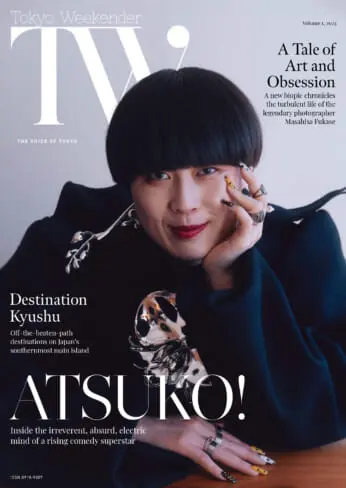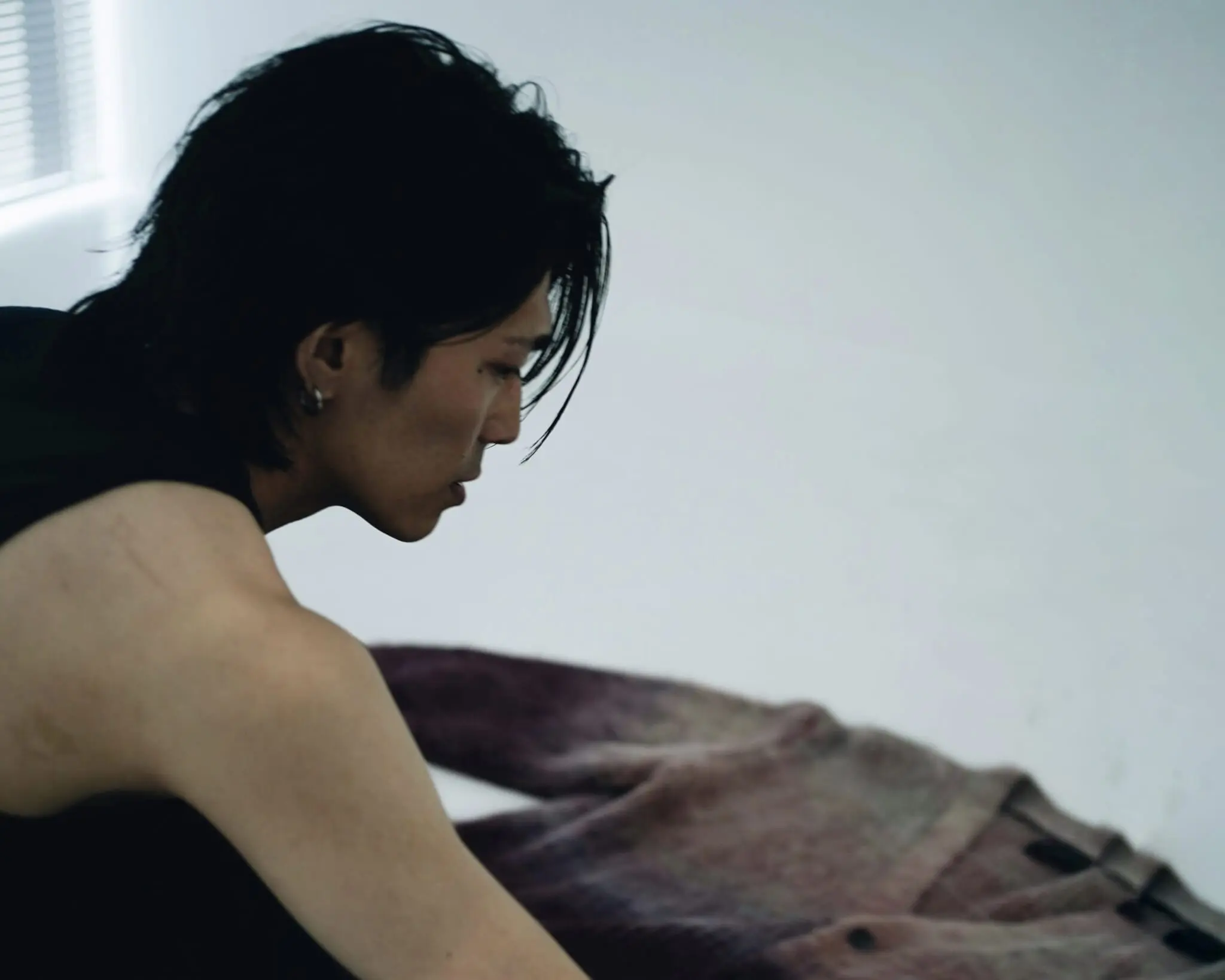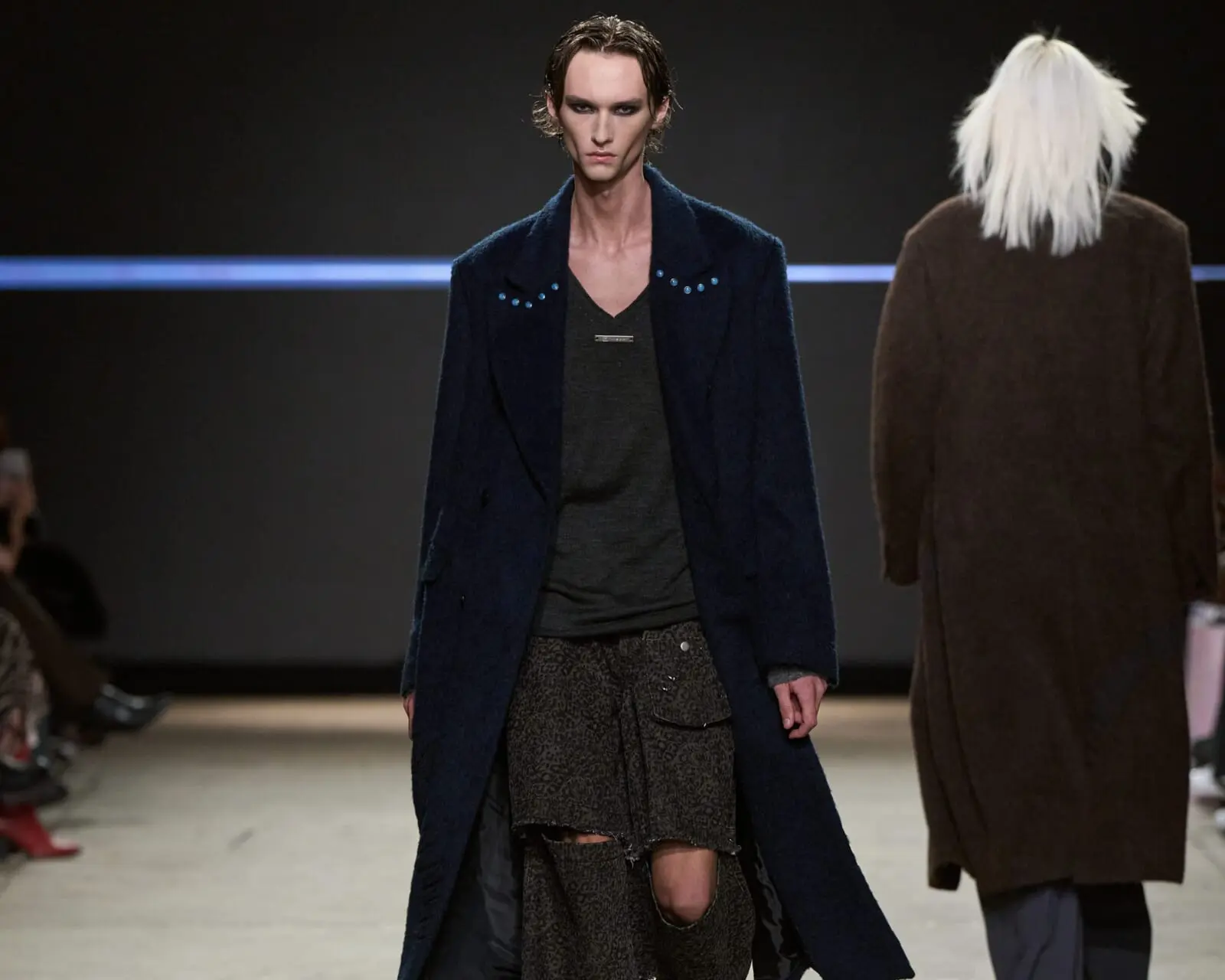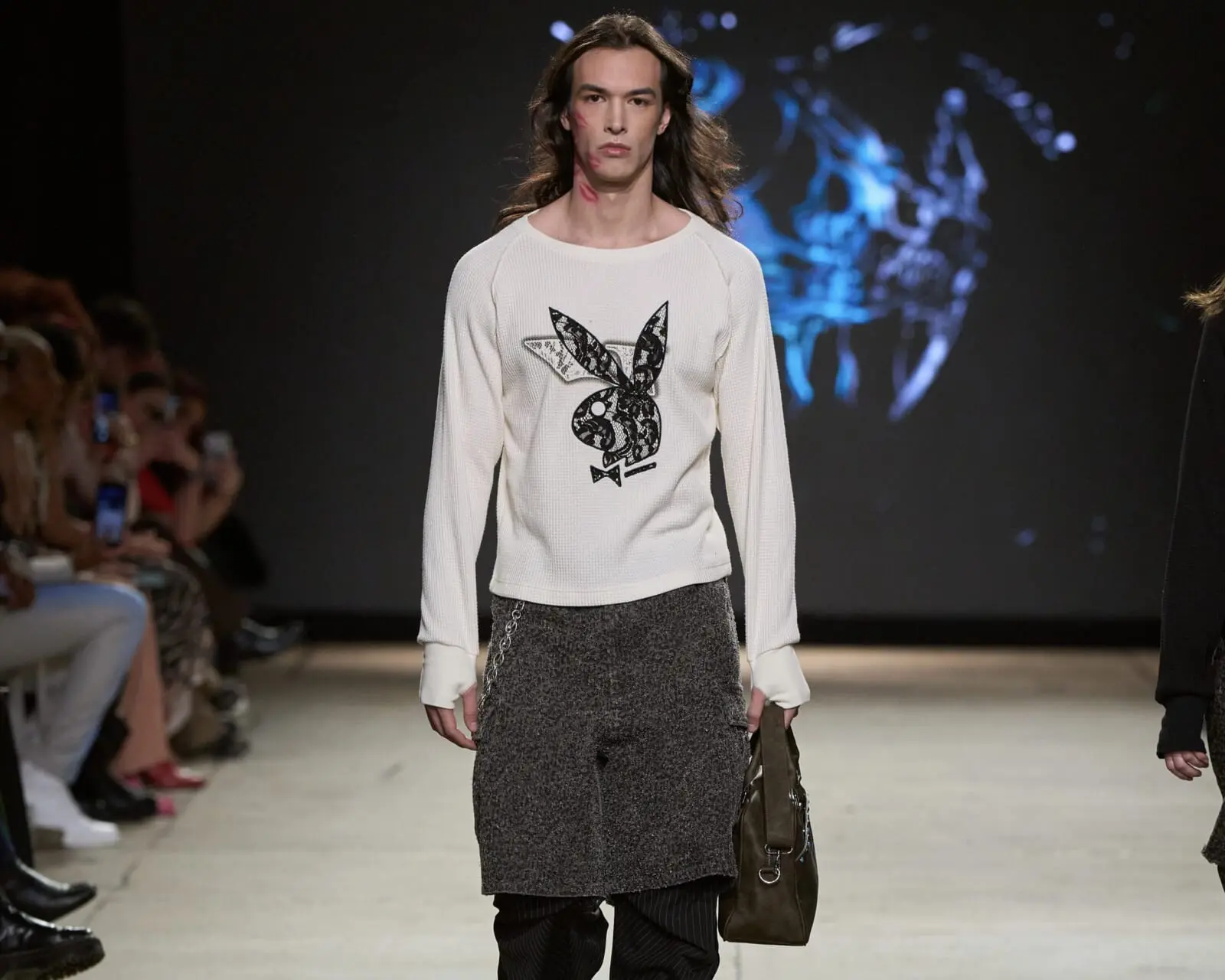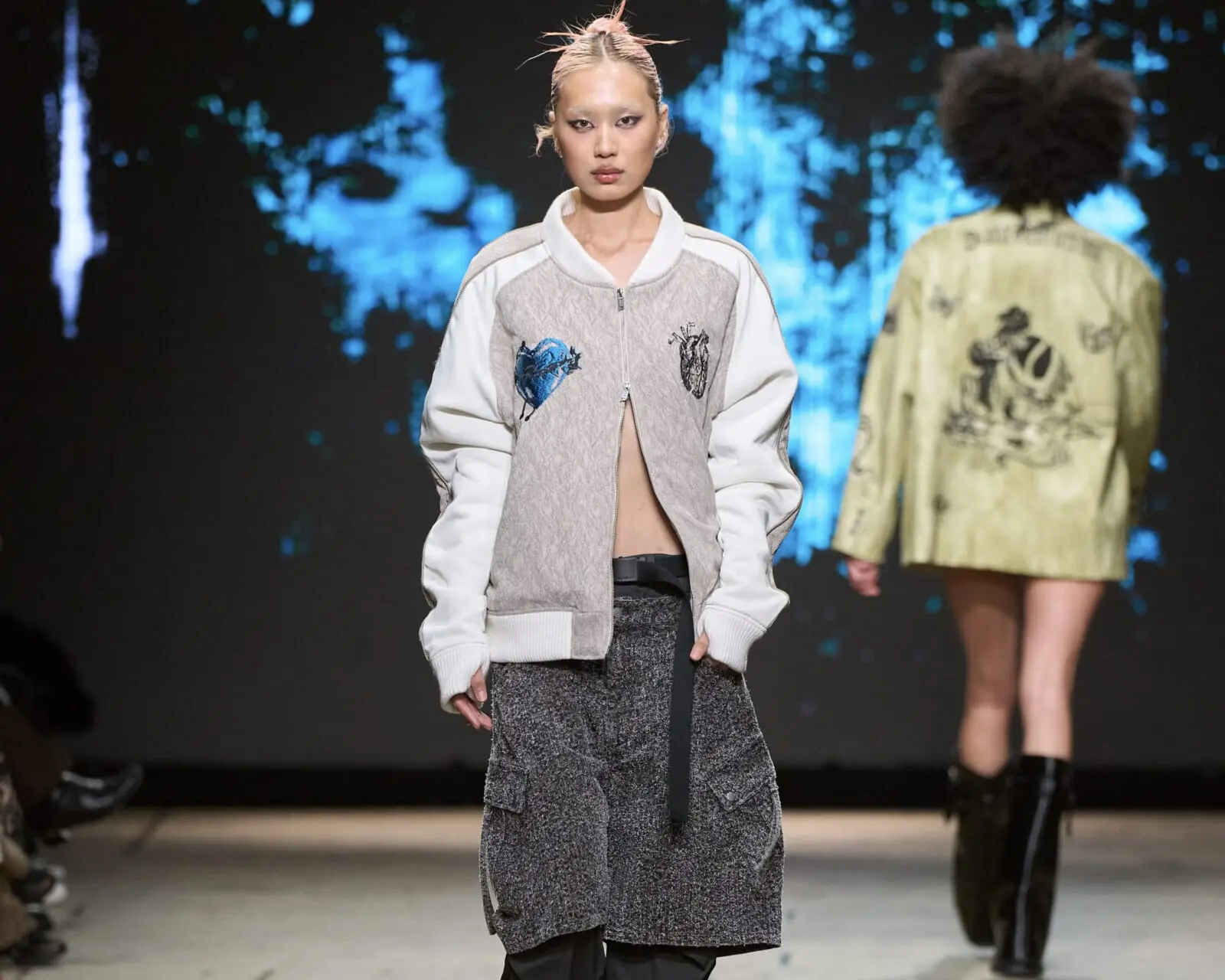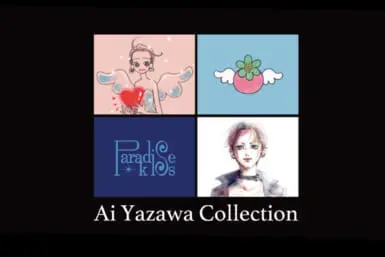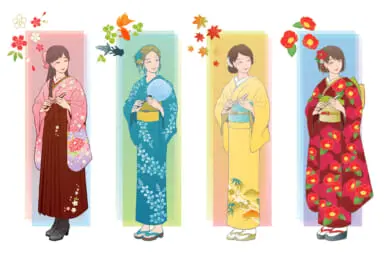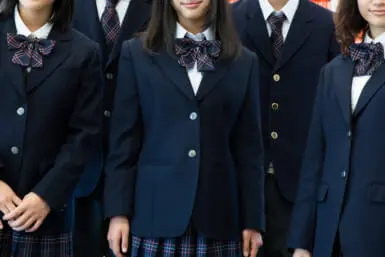The models move fast. Faster than expected. Their boots strike the ground hard, in sync with the pulsing bassline that rattles throughout the warehouse. Leather jackets with collars yanked high, denim slashed and raw at the edges, a dissonance of textures: coarse wool against slick nylon, structured coats swallowing softer silhouettes underneath.
Yuki Otake watches from the wings. This is the 26-year-old, Tokyo-born designer’s debut New York Fashion Week show — his brand, Vi E Dit, was selected for the Global Fashion Collective showcase at the Chelsea Factory in Manhattan just two years after it first hit the scene. It’s not difficult to see why: His designs are assured, effortlessly cool, and edgy without pretense.
“Fashion is always evolving,” Otake tells me the day before the show, nursing a coffee at The Ace Hotel New York. The name of his brand, Vi E Dit, fuses the French vie (life) and edit. “Editing isn’t just about clothes — it’s about identity, about continuously reshaping and editing yourself, in a way.”
Otake’s path into fashion wasn’t forged by industry connections, nor was it shaped by glossy magazine dreams. It was personal. When he was in high school, his younger brother was diagnosed with cancer, a shift that forced him to question not just what was possible for his brother, but for himself. What could he control? What was within reach? More than anything, he didn’t want his brother to see dreams as luxuries. For him, designing clothing became a way to create, to carve out something tangible, to prove that ambition can be achieved.
Entirely self-taught, he became the youngest designer and production manager at United Tokyo — a huge milestone. But he wanted to do more. By 25, he’d launched Vi E Dit.
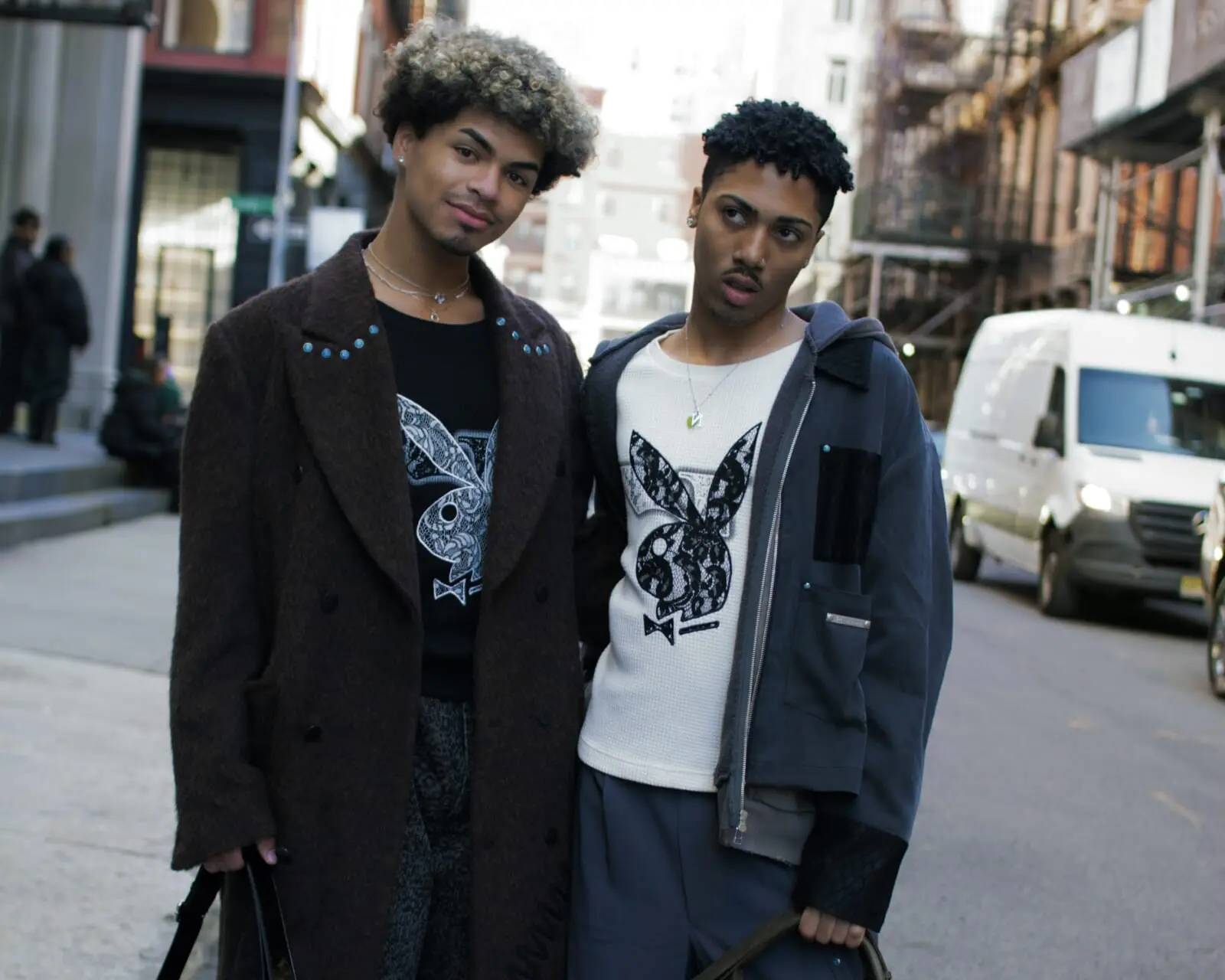
The collection he debuted at NYFW, Playboy, is his most personal yet, which may seem surprising, given its moniker and abundant use of the Playboy rabbit logo. This is actually an homage to Otake’s grandmother and the Playboy × Gucci tracksuit she always used to wear when he was growing up. The rabbit logo, stretched across the velour fabric, wasn’t just branding — it was a symbol of something playful, unrestricted, entirely hers.
The Playboy collection distorts and redefines the sensuality of American casualwear through Otake’s precise, architectural lens, marked by sharp structure and meticulous detail. He dismantles the iconic Playboy logo and reimagines it with code lace — a fabric he has used since his earliest designs. Known for its use of cord-like threads, which are sewn into lace fabric to create decorative patterns, code lace has a raised, sculptural texture that adds depth and dimension. Rarely seen in menswear, its delicate yet structured quality has become a hallmark of Otake’s work.
A similar dissonance courses through every silhouette — distressed leopard-print denim, layered under a sharply tailored coat; lace where it shouldn’t be; a collarbone revealed at an unexpected angle. “Sensuality isn’t just about exposure — it’s about imbalance,” Otake tells me. “The friction between reckless and refined. That’s where the energy is.”
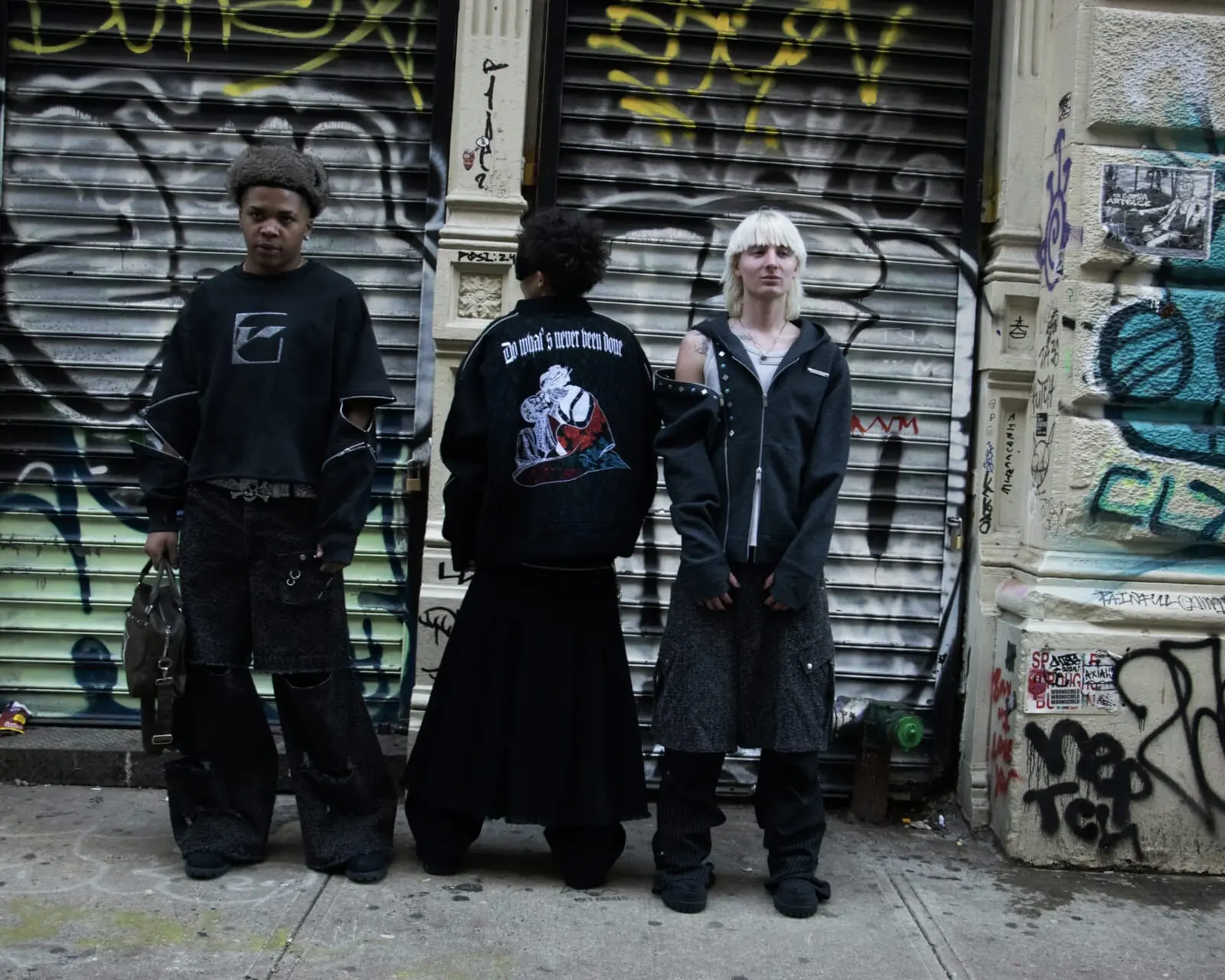
The show is over. The room is still buzzing with residual energy, with the kind of stunned quiet that follows something unexpected. The models are gone, but the bassline lingers, lodged somewhere beneath the skin.
I ask Otake if he feels like he’s made it. Where all of this leads. “I’m already thinking about what’s next. I’m planning to expand across Asia and make a name for myself in New York soon,” he says. Then, almost as an afterthought, “But yeah. This was fun.”
Because for Yuki Otake, nothing is ever finished. It’s just waiting for the next edit.
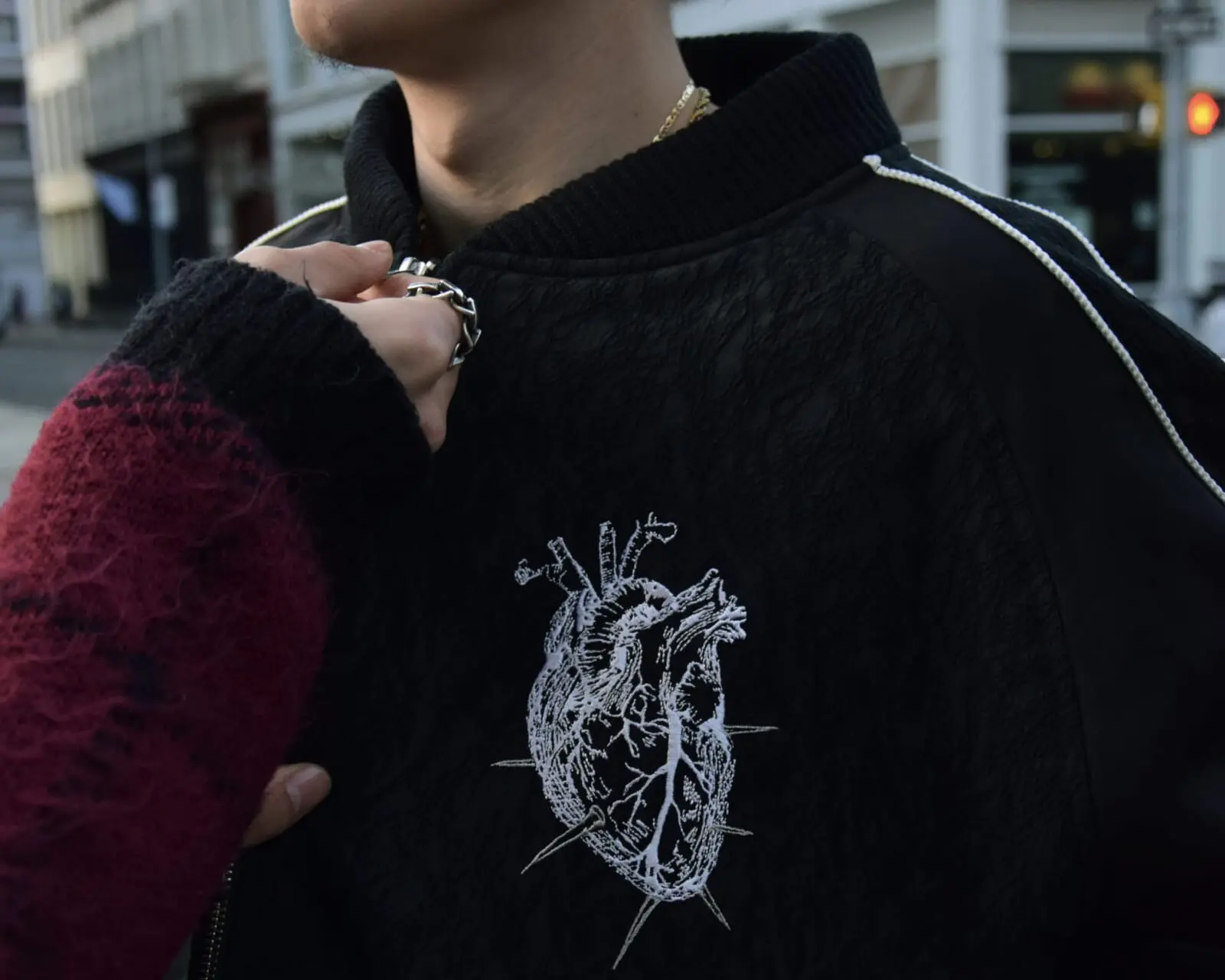
Shop Vi E Dit’s latest collection here.
